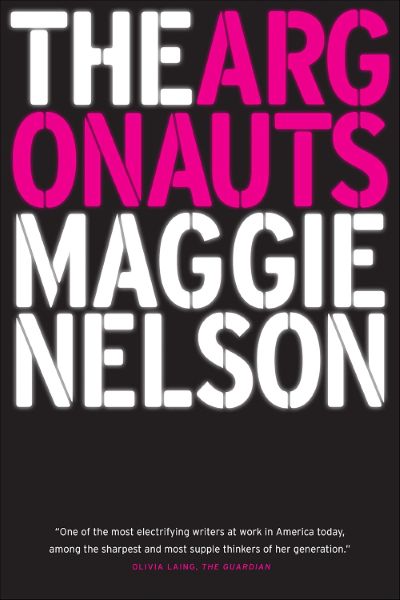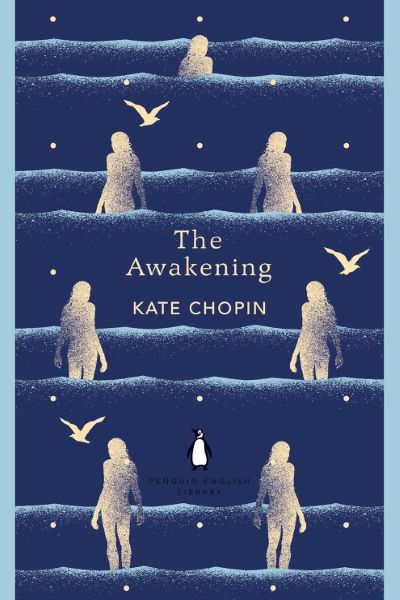The Bell Jar
A 20th-century feminist literary classic that reveals the psychological predicament and social oppression faced by women in the 1950s through semi-autobiographical narrative, profoundly exploring the relationship between mental illness and gender constraints.

📝 Book Review
In the brilliant constellation of 20th-century feminist literature, Sylvia Plath’s “The Bell Jar” shines like a dark and incandescent star, illuminating with its painful yet authentic radiance the deep predicaments of women’s inner worlds in the 1950s. This semi-autobiographical novel, first published in 1963, is not only a profound portrayal of mental illness but a sharp dissection of women’s survival conditions in patriarchal society. Through protagonist Esther Greenwood’s psychological crisis, Plath reveals the despair hidden beneath perfect appearances and the irreconcilable contradictions between social expectations and personal desires.
Plath was born in 1932 and died in 1963; her brief life was as brilliant and tragic as a meteor. As a gifted poet and writer, she demonstrated extraordinary literary talent during her studies at Cambridge University. Her marriage to British Poet Laureate Ted Hughes was once viewed as a literary world fairy tale, but complex marital relationships and personal psychological struggles ultimately led to her tragic end. The publication date of “The Bell Jar”—January 1963—was only one month before her suicide, giving this work special tragic coloring and prophetic nature.
The Bell Jar as Metaphor
The title “The Bell Jar” itself is a powerful metaphor. In the novel, the bell jar symbolizes the protagonist’s sense of suffocation and isolation from the outside world; it’s both a symbol of mental illness and a metaphor for social constraints. Esther feels trapped within a transparent but sealed bell jar, able to see the outside world but unable to truly participate, unable to breathe fresh air. This image precisely captures the psychological state of depression sufferers while also suggesting the social environment faced by 1950s women—apparent freedom and opportunity masking actual limitation and constraint.
The novel is set in 1950s America, an era that seemed prosperous and stable but was actually full of contradictions. Post-war America experienced economic prosperity and rising middle-class living standards, but it was also a time emphasizing the return to traditional gender roles. Women’s wartime job opportunities and social status were reclaimed after the war; they were expected to return to families, becoming perfect housewives and mothers. This social background provides profound sociological foundation for Esther’s psychological crisis.
Esther Greenwood: The Gifted Woman’s Dilemma
The creation of Esther Greenwood represents one of the novel’s greatest achievements. As an intelligent, talented young woman, Esther represents countless ambitious women of that era. She excelled academically, secured an internship at a New York fashion magazine, and possessed an apparently bright future. However, this surface success masked her inner emptiness and confusion. Through Esther’s internal monologue, Plath reveals the despair and anxiety of a gifted woman facing limited life choices.
The novel’s analysis of women’s life choices is particularly profound. Esther faced several seemingly different but actually all constrained life paths: becoming a devoted wife and mother, pursuing career success, or becoming a free artist. However, each path came with significant sacrifices and compromises. This choice dilemma reflects the fundamental contradiction faced by 1950s women—they were encouraged to receive education and cultivate talents but ultimately expected to abandon these pursuits and return to traditional family roles.
Complex Portrayals of Motherhood and Marriage
Plath’s depiction of motherhood and marriage is full of complexity and contradiction. The mother figure in the novel is both loving and controlling, both supportive of her daughter’s achievements and transmitter of traditional gender expectations. Esther’s feelings toward her mother are contradictory—she both craves maternal approval and rebels against maternal expectations. This complexity in mother-daughter relationships reflects the predicament women face in generational transmission—how to inherit women’s traditions while breaking through gender limitations.
The novel’s exploration of sexuality and gendered power relationships is equally notable. Esther’s relationships with different men—including her boyfriend Buddy, poet Marco, and doctor Elwin—reveal power inequalities in 1950s male-female relationships. In these relationships, women’s sexual autonomy is often ignored or denied; women are expected to maintain purity or submit to male needs. Esther’s confusion and fear about sex partly stem from society’s double standards and moral constraints on female sexual behavior.
Pioneering Depiction of Mental Illness
“The Bell Jar’s” portrayal of mental illness pioneered literary history. In an era when mental illness was still stigmatized, Plath courageously described the authentic experience of depression. She neither romanticized nor demonized mental illness but described depression symptoms and treatment processes with clinical precision and poetic sensitivity. Esther’s experiences in the mental hospital, including painful experiences with electroshock therapy, provide readers important perspectives for understanding mental illness.
This honest portrayal of mental illness was revolutionary for its time. Plath refused to present depression as a moral failing or mysterious affliction, instead depicting it as a medical condition requiring treatment. Her detailed descriptions of various therapeutic approaches and different doctors’ attitudes provided valuable patient perspectives that contributed to later mental health advocacy.
Literary Style and Innovation
The novel’s literary style is both realistic and poetic, both objective and subjective. Plath employed modernist techniques including interior monologue, stream of consciousness, and symbolism, creating a unique narrative style. Her language is both precise and poetic, capable of accurately capturing subtle inner changes and external world details. This stylistic innovation makes “The Bell Jar” not only an important feminist work but also a modernist literature classic.
The bell jar metaphor operates throughout the text at multiple levels. On the surface, it represents Esther’s depression—the sense of being cut off from life, trapped in airless space. More deeply, it symbolizes the restrictive social environment that suffocates women’s potential. The metaphor’s power lies in its ability to make the invisible visible—giving concrete form to abstract experiences of oppression and mental illness.
Contributions to Feminist Literature
“The Bell Jar’s” contributions to feminist literature are multifaceted. First, it shattered idealized narratives about women’s experiences, honestly confronting women’s inner darkness and painful experiences. Second, it revealed oppression and limitation hidden behind surface success and freedom. Finally, it connected personal psychological crisis with social structural problems, providing both psychological and sociological perspectives for understanding women’s oppression.
The novel demonstrates how patriarchal society creates impossible double binds for women. Esther is encouraged to be ambitious and intelligent but also expected to be self-sacrificing and dependent. She’s told she can “have it all” while being denied the structural support necessary to achieve this ideal. This analysis of contradictory social messages remains painfully relevant.
Impact on Mental Health Awareness
This work also holds important significance for mental health advocacy. While Plath didn’t explicitly propose political arguments about mental health, her descriptions objectively promoted public understanding of mental illness. The novel’s detailed descriptions of treatment processes, including comparisons of different doctors and therapeutic methods, provided important patient perspectives for improving mental health services.
The timing of the novel’s publication also reflects contemporary attitudes toward women’s experiences. Initially published under the pseudonym “Victoria Lucas,” this detail itself illustrates the pressure faced by female authors when dealing with sensitive subjects. Only in 1967 was the work republished under Plath’s real name, with American publication delayed until 1971. This publication history reflects societal taboo attitudes toward women’s mental illness and sexual experiences.
Critique of Consumer Culture
The novel’s critique of 1950s consumer culture also deserves attention. Esther’s internship experience at the New York fashion magazine reveals how the fashion industry participates in constructing and disseminating specific female images. Those beautiful clothes, cosmetics, and lifestyle suggestions, while seemingly empowering women, actually reinforce stereotypes and consumer pressures on women. This analysis of consumer culture provided important inspiration for later feminist cultural criticism.
Education and the Intellectual Woman
“The Bell Jar’s” exploration of education and intellectual women’s circumstances is equally profound. As a well-educated young woman, Esther’s pain partly stems from contradictions between intellectual awakening and realistic limitations. She clearly recognizes the choice dilemmas she faces, understands society’s unfair treatment of women, but feels powerless to change this situation. This predicament of intellectual women remains relevant today.
The novel suggests that education without corresponding opportunities for meaningful work creates particular psychological strain. Esther’s intelligence and education make her acutely aware of limitations that less-educated women might accept more readily. This analysis illuminates how expanding educational opportunities for women without transforming broader social structures can create new forms of suffering.
Female Relationships and Solidarity
The novel’s depiction of friendship and female group relationships is also important. Esther’s relationships with other women—including roommate Doreen, friend Joan, and fellow patients in the mental hospital—demonstrate both possibilities for mutual support among women in difficulty and potential competition and misunderstanding. This complex portrayal of female relationships avoids simple sisterhood narratives, more authentically reflecting diversity within women’s groups.
These relationships show how patriarchal systems can turn women against each other while also revealing the potential for genuine female solidarity. Joan’s suicide serves as a dark mirror to Esther’s recovery, suggesting that survival under patriarchy requires both personal strength and social support.
Contemporary Relevance
Today, “The Bell Jar” remains an important classic of feminist literature and mental health literature. In an era of increasing mental health awareness, Plath’s descriptions of depression retain important educational value. Her work has helped countless readers understand mental illness and reduce related stigma and misunderstanding. Simultaneously, the novel’s critique of gender expectations and social pressure remains relevant as contemporary women face new forms of gender inequality.
From a literary influence perspective, “The Bell Jar” has inspired countless subsequent works, from Margaret Atwood’s novels to contemporary feminist literature, all bearing traces of Plath’s influence. Her pioneering model of combining personal psychological crisis with social criticism became an important reference for many later female writers.
From a psychological research perspective, “The Bell Jar” provides precious firsthand material for understanding depression, particularly female depression. Modern psychological research has confirmed many phenomena described by Plath in the novel, including the impact of gender role pressure on mental health and the important role of social support in psychological recovery.
Global Impact and Universal Themes
Against the backdrop of global women’s movements, “The Bell Jar” has gained new interpretive space. While the novel describes the experiences of 1950s American middle-class white women, the gender oppression mechanisms it reveals have universality. Female readers worldwide can find resonance in Esther’s experiences, proving the cross-cultural characteristics of gender inequality.
“The Bell Jar” reminds us that women’s liberation is not only a matter of political and economic rights but also psychological and mental health issues. True gender equality requires creating a social environment that allows women to fully develop their potential without being constrained by traditional role expectations. Today, as we continue fighting for gender equality, Plath’s insights remain profoundly instructive. Through her pain and talent, she revealed the psychological costs of gender oppression while showing us that the path to true freedom must include dimensions of psychological liberation.
Conclusion: A Lasting Warning and Inspiration
“The Bell Jar” stands as both warning and inspiration—a warning about the costs of constraining human potential based on gender, and inspiration for those struggling to break free from limiting social expectations. Plath’s achievement lies not only in her honest portrayal of mental illness but in her analysis of how social structures create and maintain psychological suffering.
The novel’s enduring power comes from its recognition that personal and political liberation are inseparable. Esther’s bell jar is both internal psychological state and external social condition. True freedom requires addressing both dimensions—transforming oppressive social structures while supporting individual psychological healing and growth.
Through Esther’s journey from suffocation to tentative recovery, Plath charts a path that many continue to follow: the difficult but necessary work of becoming authentic in a world that demands conformity, of maintaining hope in the face of systemic oppression, of finding ways to breathe freely even when surrounded by invisible barriers. In this sense, “The Bell Jar” remains not just a historical document but a contemporary guide for anyone seeking to lift the bell jar and breathe free air.
Discussion
读书讨论
分享您对这本书的感想和看法,与其他读者交流见解
加入讨论
分享您对这本书的感想和看法,与其他读者交流见解
加载评论中...
Book Info
🛒 Get This Book
 Buy on Amazon
Buy on Amazon Related Books
读书讨论
分享您对这本书的感想和看法,与其他读者交流见解
加入讨论
分享您对这本书的感想和看法,与其他读者交流见解
加载评论中...

